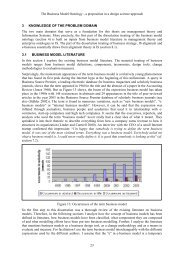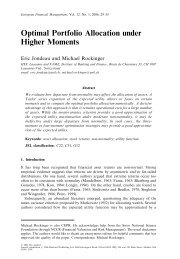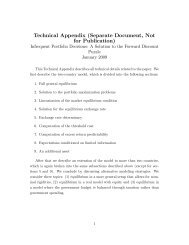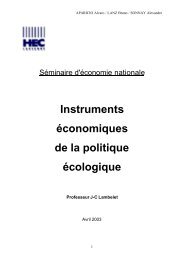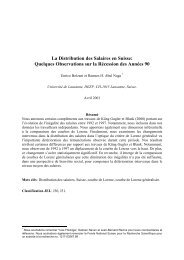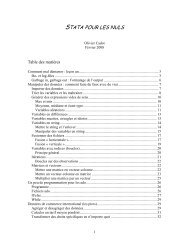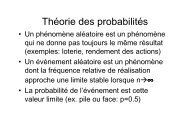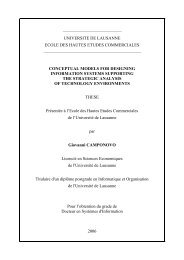Do consumer s tastes differ final 1.7. - HEC
Do consumer s tastes differ final 1.7. - HEC
Do consumer s tastes differ final 1.7. - HEC
You also want an ePaper? Increase the reach of your titles
YUMPU automatically turns print PDFs into web optimized ePapers that Google loves.
Tastes are the same. Are <strong>tastes</strong> really the same?<br />
D O C ONSUMER’ S T ASTES D IFFER?<br />
Introduction<br />
When talking about taste, we first have to ask ourselves “What is taste?” Our main interest here is to<br />
analyse the meaning of taste as being a<br />
“liking or preference” 1 .<br />
Preferences are a key element in <strong>consumer</strong> research as they form the basis of purchase intentions,<br />
actual choice and consumption. This is why a lot of research has been done about preferences,<br />
evidently having an important impact on demand. On the other hand, this explains why studies take<br />
actual purchasing behaviour as an indicator for preferences and therefore also for taste.<br />
Just thinking of the variety of <strong>differ</strong>ent cultures, one would be tempted to say that <strong>differ</strong>ences in taste<br />
must exist. By contrast, economists have analysed this issue in the light of demand curves. Most of<br />
them have concluded that <strong>tastes</strong> are similar.<br />
This is a rather surprising result, considering that consumption behaviour seems to be obviously<br />
<strong>differ</strong>ent when comparing India with Scandinavia, for example. In which way would taste be assumed<br />
to <strong>differ</strong>?<br />
1. First, taste should <strong>differ</strong> across space, like from Asia to Europe.<br />
2. Second, taste could <strong>differ</strong> across time in the individual life-cycle, as an individual develops and<br />
taste changes with the years.<br />
3. Third, taste may <strong>differ</strong> across generations, as grandparents, parents and grandchildren have<br />
<strong>differ</strong>ent preferences.<br />
On the contrary, an argument speaking for a rapprochement of <strong>tastes</strong> is globalization. The<br />
liberalization of the world market leads to an increased availability of a larger range of products,<br />
available at places they had not been some years ago. This development might induce more and more<br />
similar <strong>tastes</strong> between cultures.<br />
The question whether <strong>tastes</strong> <strong>differ</strong> is also of economic importance for the more and more growing<br />
global trade. In case of slight <strong>differ</strong>ences, adapting a product to the specific local circumstances would<br />
be sufficient. In case of severe <strong>differ</strong>ences, it might even be better not to introduce a specific product<br />
on another market at all.<br />
The objective of the present paper is to carry out a survey of literature on preference. As preferences<br />
can be expressed by utility functions, the first part of the present paper introduces ways to measure<br />
preferences via utility or consumption. In order to enlighten <strong>differ</strong>ent possible aspects, theoretical as<br />
well as empirical literature is going to be introduced. Therefore, the second part discusses the<br />
approaches of several authors and the models used. Finally, a comparative study on consumption of<br />
yoghurt in Belgium and Poland provides an empirical example.<br />
1 Oxford Advanced Learners Dictionary, 1989<br />
B EKE T INNEBERG 2<br />
19 MARCH 2003




